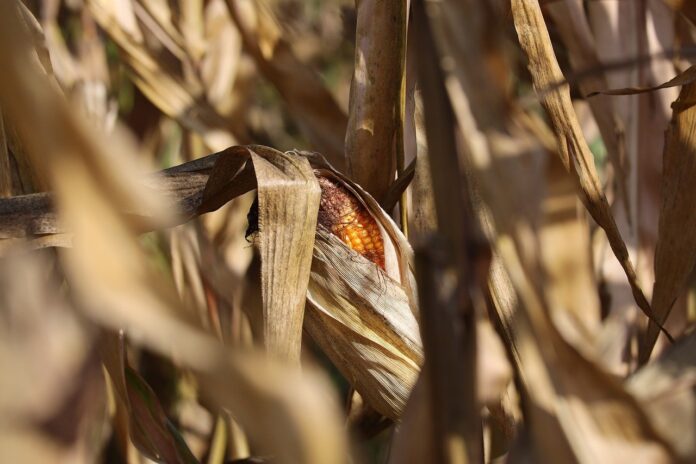The harvest season is finishing with a warm rush, but other news also moves the markets. Corn traders endured or cheered a three-year low last week, which was bad for producers and good for processors. It’s nice that there is always someone happy at the end of the day.
The processors were happy by the new low, which was at $4.61 3/4 December futures Nov. 10. This came as the U.S. Department of Agriculture surprised the market watchers with an increase of 1.9 bpa in yield, to 174.9 bpa for the national yield estimate. This gives us a crop of 15.234 billion bushels, 90 million bushels over the 2016 record crop for a new record.
Along with the big crop came a corn stocks estimate that was a five-year high. The record crop also comes after a late spring and early summer that had most farmers worrying about dry conditions.
There are areas that were hurt by drought, but I have talked to farmers who were a little embarrassed to admit how good the corn yields were, although the bean yields were off as they expected. Chalk the crop up to better genetics, better tillage practices and timely rains.
South American crop conditions
The corn markets fought off lower prices and closed unchanged Nov. 13. The talk was less of USDA, which had been digested Nov. 9 and 10, and was more of South American production problems. Argentina’s drought crop is not much more than half of normal. Brazil is planting soybeans over a large window on the calendar because of a large range of latitudes.
Planting is historically late because Brazilians have been wanting some rain to plant into. The longer the crop gets delayed, the better for soybean prices here and the better for corn prices, also.
This is because late planting means many “cerado,” or second-crop corn acres will not be planted at all. Still, these South American factors are not quantified yet, while the USDA numbers are assumed to be pretty accurate by the first of November.
Corn
Reviewing the price curves, December corn futures are currently, as of the evening of Nov. 13, trading at $4.75 1/4, down two cents for the overnight session. The recent high was just back Oct. 10, and the low was actually $4.61 3/4 Nov. 10, the day after the USDA reports. If you go back to June 21, we had traded as high as $6.29 3/4.
The corn harvest nationally is ahead of the five-year average. We are 88% harvested in the U.S. as of the evening of Nov. 12. The average is 86%. Ohio lags that. We took in a whopping 23% of the Ohio crop in a week but are still at 68%. Normal is 76%. Much of the shortage came with a late spring for us.
Soybeans
November soybeans are now in delivery status, so we need to look at January futures. We had a low of $13.36 after the report Nov. 9, and a loss at the close of 22 1/2 cents. We gained four cents Nov. 10, and the day session Nov. 13 saw a gain of 35 cents, and a high of $13.86. That is a gain of 50 cents after the report, when soybeans started trading on their own with a different set of news than the corn had.
The Ohio soybean harvest is well ahead of normal, with 6% cut last week to get us to 95% harvested. Our average is 89%. The U.S. is at 95%, also, ahead of the 91% average. The acreage left to go is in the ‘I’ states and in the northern Corn Belt. The slowest state that matters is Michigan, with only 52% of the soybeans off. I bet they do close to 30% more in a sleep-deprived marathon this week.
Farm bill status
While the harvest was going on, Congress got nothing done on a new farm bill. If I remember right, this is a five-year commitment, and it has run out. Congress has been spending time fighting to get another new House Speaker, and not passing legislation. Now they are back up against a deadline for a spending bill once again, so they are officially recognizing that they will not get a farm bill done.
The Republican sort-of-a majority is talking up a one-year extension to the last farm bill. It remains to be seen when they can get that finalized, and it could be obstructed by a lack of cooperation between the parties.
Wheat
Wheat continues to amaze, with the “war highs” long behind us, and current prices below the level we had before Russia’s war in Ukraine started. We can blame it on the big Russian crop, but I don’t think that is the whole story. I think we are conveniently post-harvest and major buyers may not realize that they need to be more aggressive.
The other theory is that we actually have enough wheat, and I don’t realize it. As we are into the overnight trading session going into Nov. 14 as this is being written, December Chicago cookie futures are down almost a nickel, at $5.71.












